Volcanic eruptions are one of the most powerful natural forces on Earth.
Making your own miniature erupting volcano is a great, safe way to start learning about these incredible geological features.
Volcanic eruptions are one of the most powerful natural forces on Earth.
Making your own miniature erupting volcano is a great, safe way to start learning about these incredible geological features.
Watch the video above to find out how to make a volcano model from household items, then stand back and watch it erupt.
Read on for written instructions and to discover more about volcanoes.
1. Place your bottle upside down in the centre of a sheet of card and draw a small circle around the neck.
2. Cut a straight line through the card to the middle of the circle, and cut it out.
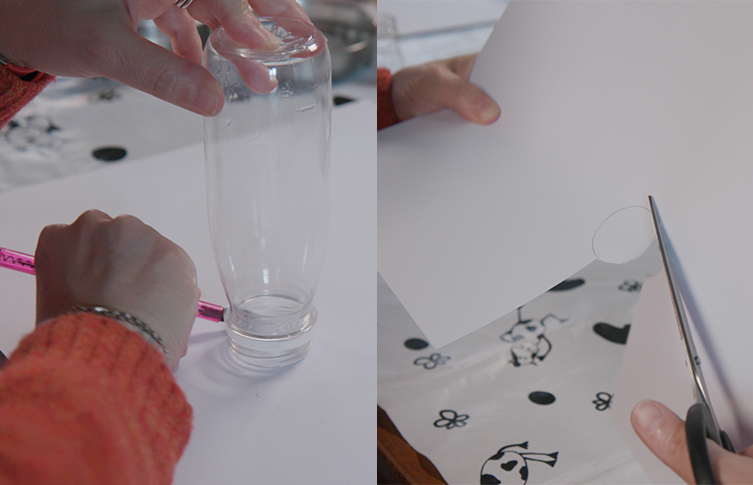
In the middle of the card, draw around the bottleneck and cut out the circle.
3. Overlap the two sides of the card to make a cone shape. Tape this into place, leaving a hole where you cut out the circle.
Cut around the base of the cone so that it sits flat, but make sure that it’s still taller than your bottle.
4. Place the cone over the bottle. Tape the top of the paper cone to the neck of the bottle to hold it in place. Tape the base of the cone to the other sheet of card.
5. Use paint to decorate the cone and make it look like a volcano. Allow your model to fully dry.
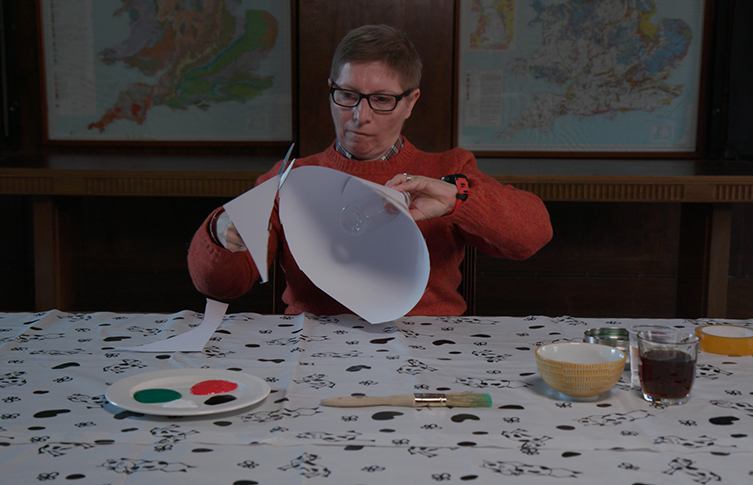
Cut away the sharp corners at the base of the paper cone so that it sits flat on the table.
6. In a bowl, combine the bicarbonate of soda and washing up liquid. Add the water and mix well. Pour this mixture into your volcano.
7. In a cup, mix together the vinegar and food colouring.
8. When you’re ready, pour the vinegar into the bottle with the bicarbonate. Wait for it to erupt and watch how the lava flows.
9. Experiment with different amounts of bicarbonate and vinegar and see how the volcano’s eruption changes.
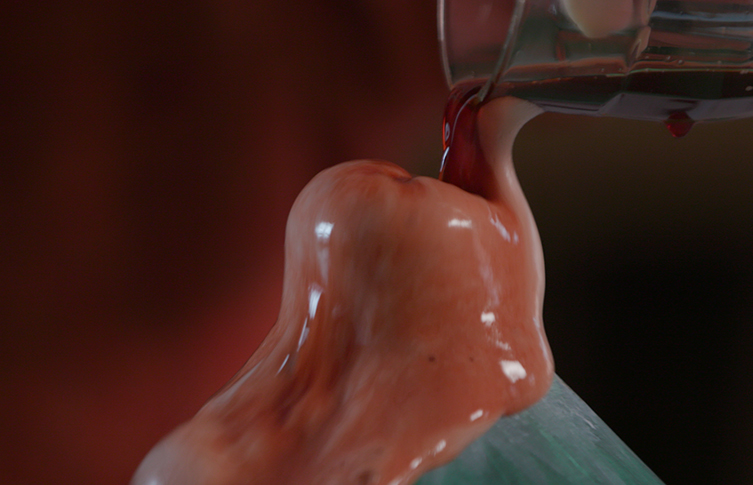
Stand back and watch your volcano erupt.
Take care when handling the eruption ingredients and stand back when watching the eruption to make sure you don’t get any in your eyes. Make sure you’re working in a well ventilated area.
To make cleaning up easier, it’s best to stand your model on a wipe-clean surface.
Rather than being one solid surface, Earth’s crust and the uppermost parts of the mantle – together called the lithosphere – are broken into several tectonic plates that float over the asthenosphere. This is a deeper layer of rock that is a solid but flows very slowly.
This slow process can cause tectonic plates to move and interact in a variety of ways. It can move plates further apart, which is called a divergent boundary. It can move plates closer together, known as convergent boundary. Or it can cause plates to slide past each other, which we call a transform boundary.
Volcanoes typically form at divergent and convergent boundaries, but they’re also seen in hot spots in the middle of tectonic plates.
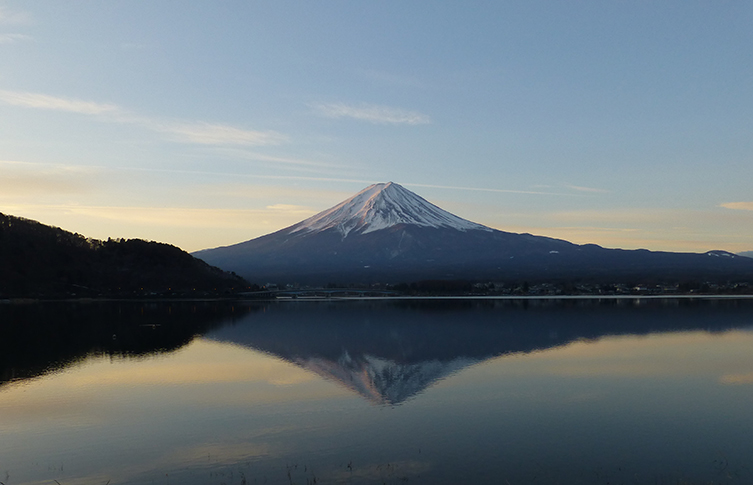
Mount Fuji is one of the world’s most famous active volcanoes. It last erupted in the early 1700s and is located about 100 kilometres from Japan’s capital city, Tokyo, although some smaller cities sit much closer. © Marion & Christoph Aistleitner (CC0) via Wikimedia Commons
Volcanoes are an opening of the Earth’s crust through which molten rock, gases and ash can escape. This mixture of materials is called magma while it’s underground, lava when it is erupted and igneous rock once it’s cooled and solidified on the surface.
Volcanoes are typically high ground or mountains, sometimes with very steep sides made from the magma that erupted.
Volcanoes come in a variety of shapes and sizes, primarily caused by the different types of magma, but also by how volcanoes behave and where they’re located.
Stratovolcanoes are the most common and perhaps most recognisable type of volcano. Stratovolcanoes are steep-sloped and cone-shaped. They’re also known as composite volcanoes.
They mostly produce explosive eruptions and are most commonly associated with convergent plate boundaries. Their lava is sticky (viscous), which means that it doesn’t usually spread too far before cooling on the surface, giving the volcano a tall and cone-shaped profile.
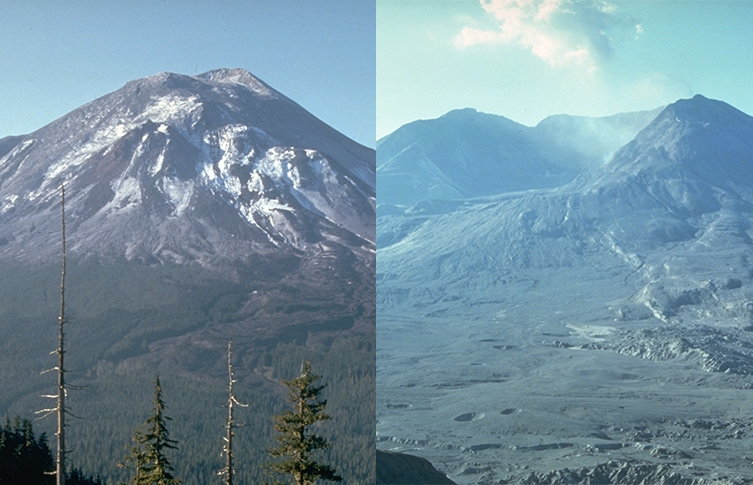
Mount St Helens is a stratovolcano in the United States that famously erupted in May 1980. A strong earthquake caused a massive landslide that collapsed the northern face of the mountain. This reduced pressure and allowed the volcano to explode from its side. © Harry Glicken, USGS/CVO via Wikimedia Commons
The violent 79 AD eruption of the still-active stratovolcano Mount Vesuvius in Italy is regarded as the deadliest in European history. It may have killed more than 16,000 people in total.
Several settlements were destroyed by its pyroclastic flow, the most famous being the ancient Roman city of Pompeii. Pyroclastic flow is a very hot mixture of ash, gases and other volcanic materials that moves at high speed along the flank of the volcano.
This was what is known as a Plinian eruption, with jets of magma and gases emerging from the volcano at high speeds. These types of eruptions can last for several days and cause a plume of superheated ash and gas that can expand and reach a height of 55 kilometres.
Stromboli is another of Italy’s active stratovolcanoes, but it behaves differently to Vesuvius. This island volcano has been exhibiting a pattern of eruption for 2,000 years. Mildly explosive blasts of magma – called fire fountains – consistently occur from a few minutes to a few hours apart. This type of eruption is known as strombolian and is exhibited by other volcanoes around the world, such as by Mount Erebus in Antarctica.
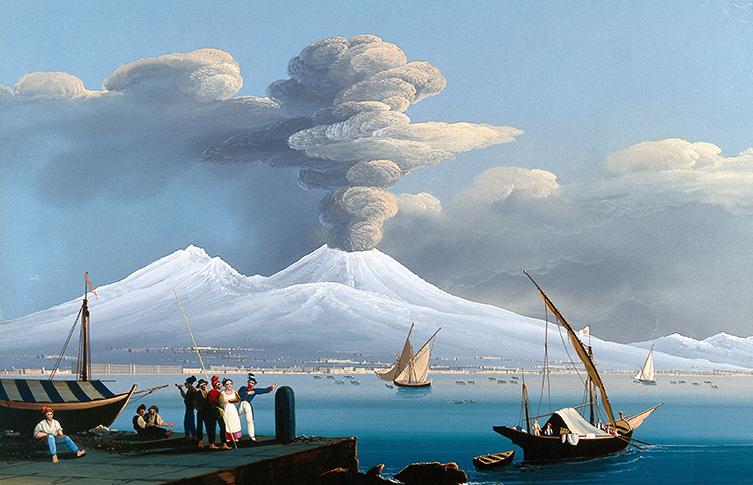
A gouache painting by Mauton of Mount Vesuvius erupting in 1836. Image courtesy of Wellcome Collection, Public Domain
Shield volcanoes are generally not as tall as stratovolcanoes, although they can still reach great heights.
Olympus Mons is a shield volcano on the planet Mars. It’s the largest volcano in the solar system at around 25 kilometres tall and 624 metres in diameter.
A shield volcano’s eruptions are usually gentle and non-explosive. They’re instead known for their lava flows and fountains. Shield volcanoes have runny lava (low viscosity) that travels further than the stickier lava of stratovolcanoes. This flowing lava results in the far-reaching, gently sloping sides of these volcanoes.
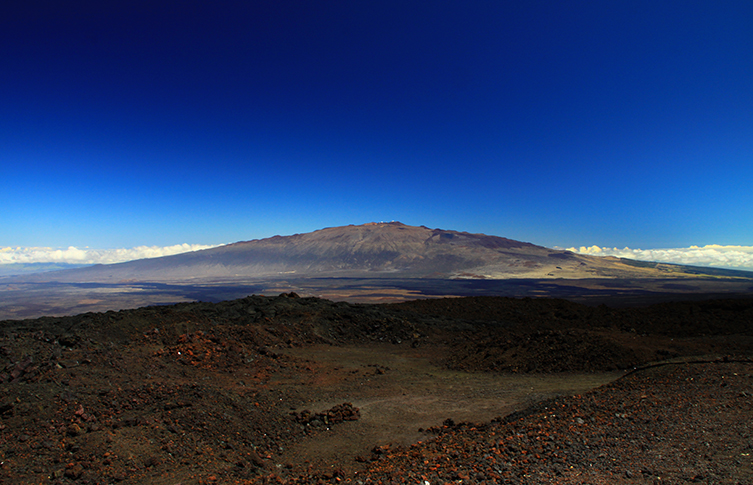
Mauna Kea is a dormant shield volcano in Hawaii. Its peak is the highest point in the state of Hawaii, at 4,207 metres above sea level. © Nula666 (CC BY-SA 3.0) via Wikimedia Commons
Shield volcanoes are typically located on hot spots found across tectonic plates rather than at the boundaries. The best known are the Hawaiian volcanoes such as Mauna Loa, Mauna Kea and Kīauea.
Other volcanoes around the world also exhibit gentle Hawaiian eruptions. This type of eruption can produce lava fountains that can be hundreds of metres tall and travel at speeds of up to 100 metres per second.
Cinder cones are relatively small volcanoes made from loose volcanic material. Most are short-lived and can grow on the sides of larger volcanoes. They typically form through an explosive eruption or lava fountain from a single vent.
One of the best known is Parícutin, a volcano that suddenly formed in a cornfield in Michoacán, Mexico, beginning in 1943. Due to its continuous strombolian eruptions, the volcano grew until its eruptions ceased in 1952. It had reached 300 metres tall.
Parícutin was the first time that volcanologists were able to document the full life cycle of a volcano.

The cinder cone volcano, Parícutin, erupting in 1943. © Bodil Christensen via Wikimedia Commons
The largest and most explosive volcanoes on Earth are popularly called supervolcanoes, although this isn’t a scientifically defined type of volcano.
These enormous volcanoes produce giant calderas – volcanic craters formed by the collapse of the volcano itself when the magma chamber below was emptied by an eruption.
One of the most famous is Yellowstone in the United States, which has a caldera around 72 by 55 kilometres. The Yellowstone supervolcano last erupted around 630,000 years ago.

The Yellowstone supervolcano is well known for its geothermal activity in the form of hot springs, fumaroles and geysers.
There are around 20 known supervolcano sites around the world. The most recent supereruption was of Taupō volcano in New Zealand around 26,500 years ago.
The eruption of the Indonesian supervolcano Toba around 73,000 years ago is thought to have triggered a drop of 2-3 degrees Celsius in air temperature globally, causing a five- to seven-year volcanic winter. This eruption may have had an profound impact on the course of the human species.
Do you have a burning question about science or nature you want answered? Fill out the form below and we'll work with our scientists to answer some of them in our online magazine Discover or on our YouTube channel.
This new feature is in beta. Find out more.
Don't miss a thing
Receive email updates about our news, science, exhibitions, events, products, services and fundraising activities. We may occasionally include third-party content from our corporate partners and other museums. We will not share your personal details with these third parties. You must be over the age of 13. Privacy notice.
Follow us on social media